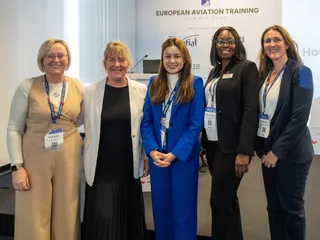Simulated Air Taxis Tested at Orlando Airport
Contact Our Team
For more information about how Halldale can add value to your marketing and promotional campaigns or to discuss event exhibitor and sponsorship opportunities, contact our team to find out more
The Americas -
holly.foster@halldale.com
Rest of World -
jeremy@halldale.com

A study by Embry‑Riddle researchers found that advanced air mobility (AAM) vehicles, including air taxis and autonomous aircraft, could be integrated at Orlando International Airport without disrupting existing commercial air traffic.
Published in April in the journal Aerospace, the study was commissioned by the Greater Orlando Aviation Authority (GOAA), which operates the airport. Researchers worked with GOAA to identify possible airspace corridors that could accommodate AAM aircraft, which are designed for vertical or short takeoff and landing operations in urban and regional environments.
Using air traffic data from March 25, 2023—a high-traffic day at the airport—researchers used simulation software to assess the potential impact of AAM operations. The software, known as Total Airspace and Airport Modeler, simulated airspace, flight schedules, aircraft paths, wake turbulence, and ground operations. The simulation found that up to 22 AAM vehicles could operate without causing air traffic or wake turbulence conflicts.
The study provides data for researchers and airport officials to consider when assessing the operational impact of integrating AAM aircraft into the National Airspace System.
Dr. Victor Fraticelli Rivera, assistant professor of Aeronautical Science, said the study enabled researchers to evaluate transportation solutions within complex airspace and emphasized the need for collaboration among aviation stakeholders.
Other contributors included Dr. Robert Thomas, associate professor; Carlos Castro Peña, director of operations at Embry‑Riddle’s Center for Aerospace Resilient Systems; and Sakurako Kuba, a Ph.D. candidate whose role included simulating air traffic and evaluating airspace impact.
Kuba noted that the project provided practical experience with airspace management and AAM development. The research aligns with the FAA’s Innovate 28 program, which is examining safe AAM integration at Orlando International.


